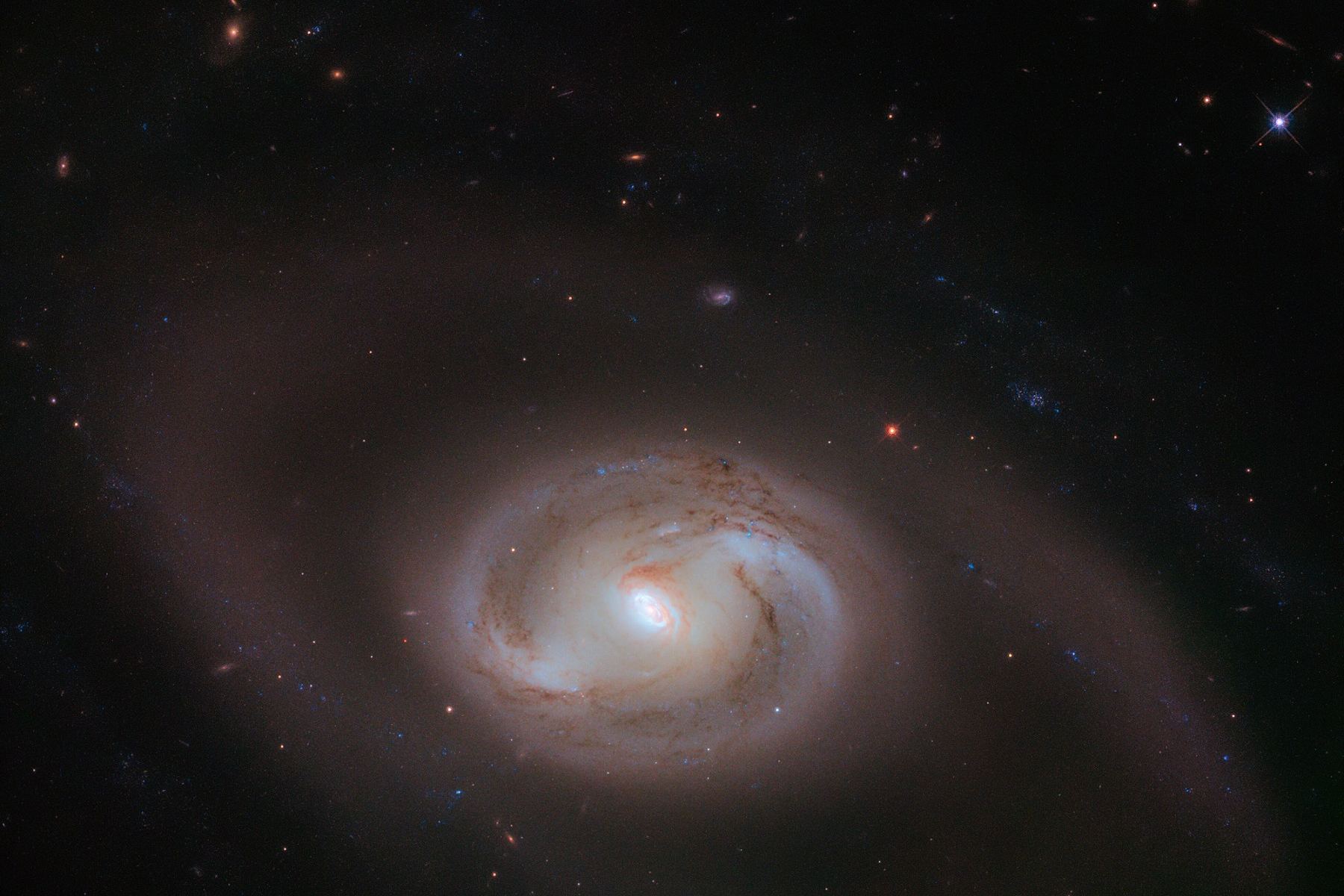Even after thirty years of faithful service, the Hubble Space Telescope continues to reveal truly fascinating things about our Universe. This includes the image (shown at top) taken of the astronomical feature known as NGC 2273, a barred spiral galaxy similar to the Milky Way. However, upon closer inspection, the image reveals that the spiral arms of this galaxy contain a second set of spiral arms.
NGC 2273 is an example of a Seyfert galaxy which, like a quasar, has a very active core powered by a supermassive black hole (SMBH). This causes the central region to glow incredibly bright in multiple wavelengths, to the point that it outshines all the other stars in the galaxy combined. This brightness is what allowed for its discovery in the late 19th century, despite the fact that it is 95 million light-years away.

At first glance, this galaxy looks like a basic barred spiral galaxy, with two pinwheeling arms extending from a central bar made up of densely-packed stars, gas, and dust. However, these arms conceal a second set of spiral arms within them. This effectively makes NGC 2273 a multiring structure, consisting of inner rings and a set of outer “pseudorings.”
As galaxies go, this is a rather unique feature. According to the predominant theory of galaxy formation and evolution, rings are created when a galaxy’s spiral arms loop around the galactic center and appear to become nestled close to each other. NGC 2273’s pseudorings, on the other hand, are believed to have formed by two swirling sets of spiral arms that came together and the inner ring by two arching structures nearer to the galactic center.
NASA estimates that Hubble will continue to orbit Earth until sometime between 2030 and 2040. Who knows how long it will continue to capture images of the cosmos between now and then? Many observatories have been deployed since Hubble first took to space, but history is sure to remember her above all others as being the workhorse of space telescopes!
Further Reading: NASA

